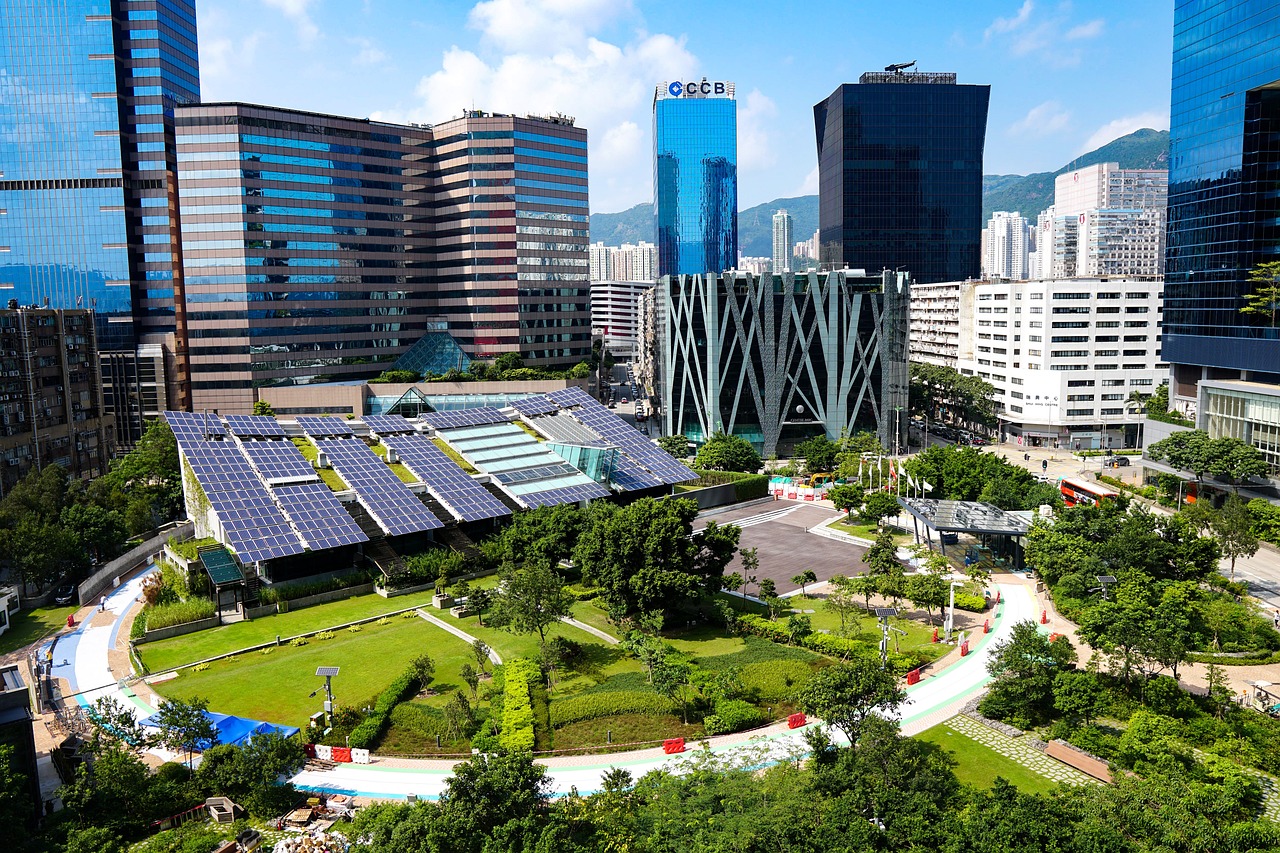Immerse yourself in the wonders of sustainable and eco-friendly family travel with our article, “Eco-Conscious Escapes: Making Family Travel Sustainable And Eco-Friendly.” In this comprehensive guide, we take you on a journey towards discovering the magic of creative activities, as we delve into a world of imaginative pursuits that will transform ordinary moments into extraordinary memories for your family. Embrace the positive energy that stems from nurturing creativity in your children, and join us in cultivating a vibrant atmosphere where the spirit of innovation thrives. Get ready to embark on an eco-conscious adventure, where each day becomes a canvas for boundless imagination and delightful experiences.
Choosing Environmentally Friendly Destinations
When planning your next family trip, it is important to consider destinations that prioritize sustainable practices. By choosing environmentally friendly destinations, you can have a positive impact on the environment while enjoying your vacation. Researching destinations that are committed to sustainable tourism is a crucial first step in making eco-conscious travel choices.
Look for destinations that have implemented initiatives to protect the environment, conserve resources, and support local communities. These destinations often have certifications or partnerships with organizations focused on sustainable tourism. By taking the time to research and choose such destinations, you can ensure that your travel has a minimal negative impact on the environment.
Selecting Accommodations for Eco-Friendly Family Travel
In addition to choosing environmentally friendly destinations, selecting eco-friendly accommodations is another important aspect of sustainable travel. Look for accommodations that have implemented sustainable practices such as energy-efficient systems, water conservation measures, and waste reduction techniques.
Many hotels and resorts now offer eco-friendly amenities such as solar power, rainwater harvesting, and recycling programs. Staying at these types of accommodations not only reduces your carbon footprint but also supports businesses that prioritize sustainability. Choosing eco-friendly accommodations can enhance your travel experience while minimizing your environmental impact.

Exploring Nature Reserves and Protected Areas
When planning your itinerary, consider including visits to nature reserves and protected areas. These regions are often dedicated to the preservation and conservation of wildlife and natural habitats. By exploring these areas, you can appreciate the beauty of nature while supporting the conservation efforts of local communities.
Research the nature reserves and protected areas near your destination and plan activities such as hiking, birdwatching, or wildlife spotting. These activities allow you to immerse yourself in nature and gain a deeper understanding of the importance of environmental conservation. Remember to follow responsible tourism practices and adhere to any guidelines or rules set by the authorities to minimize your impact on these fragile ecosystems.
Reducing Carbon Footprint
One of the most significant ways to plan a sustainable and eco-friendly family travel is by thinking about reducing your carbon footprint. Carbon emissions from transportation, particularly air travel, contribute to climate change. By opting for eco-friendly modes of transportation and minimizing air travel, you can significantly reduce your environmental impact.
Consider alternatives to air travel, such as train or bus journeys, which have a lower carbon footprint. If flying is unavoidable, choose direct flights whenever possible as take-offs and landings are the most fuel-intensive parts of a flight. Additionally, explore options like carpooling or using public transportation at your destination to further reduce carbon emissions.
To offset the carbon emissions you produce during your travel, consider investing in carbon offset programs. These programs fund projects that aim to reduce or remove greenhouse gas emissions from the atmosphere. By participating in carbon offset programs, you can help balance out the environmental impact of your travel.

Packing Light and Mindfully
When it comes to sustainable travel, packing light and mindfully can make a big difference. By bringing reusable water bottles and containers, you can reduce the consumption of single-use plastics during your trip. Opt for durable, eco-friendly toiletries and personal care items that are free from harmful chemicals and come in recyclable or biodegradable packaging.
Choosing sustainable and ethical clothing is another way to make your packing more eco-friendly. Look for clothing made from organic or recycled materials, as well as items from brands that prioritize fair trade and ethical practices. By making conscious choices about what you pack, you can minimize waste and support environmentally friendly products.
Supporting Local Communities
Another important aspect of eco-conscious travel is supporting local communities. Engage in local cultural experiences and traditions to gain a deeper understanding of the destination and support local artisans and businesses. By participating in community-based tourism activities, you can contribute directly to the local economy and help preserve cultural heritage.
When shopping for souvenirs or dining out, prioritize local businesses over international chains. This way, you can support the livelihoods of local entrepreneurs and promote sustainable economic growth. By actively engaging with the local community, you can create meaningful connections and contribute to the preservation of cultural diversity.

Conserving Resources
Conserving resources is a fundamental pillar of sustainable travel. Make an effort to save energy in your accommodations by turning off lights and electronics when not in use, adjusting the thermostat to save energy, and limiting excessive water usage. Simple actions like taking shorter showers and reusing towels can significantly reduce water consumption.
Additionally, practice responsible waste management by reducing the amount of waste generated during your trip. Opt for reusable shopping bags and avoid unnecessary packaging. Reuse or recycle items whenever possible and dispose of waste properly. By conserving resources, you can minimize your environmental impact and promote sustainability.
Eating Sustainable and Local
Food consumption plays a significant role in your environmental footprint while trying to make an eco-friendly family travel. Opt for vegetarian or vegan meals whenever possible, as these diets have a lower carbon footprint compared to meat-based diets. Support restaurants with farm-to-table practices, where ingredients are sourced locally and sustainably.
Exploring local food markets not only allows you to experience the authentic flavors of the destination but also supports local farmers and reduces the environmental impact of long transportation distances for imported goods. By choosing sustainable and locally sourced meals, you can minimize your ecological footprint and contribute to the preservation of biodiversity.
Enjoying Eco-Friendly Activities
An important part of eco-conscious travel is engaging in activities that promote environmental conservation. Consider hiking in national parks and nature reserves, as these activities allow you to appreciate the natural beauty and biodiversity of the area while minimizing your impact on the environment. Follow designated trails and guidelines to protect the fragile ecosystems.
Birdwatching and wildlife spotting are other eco-friendly activities that allow you to connect with nature. Respect the animals and their habitats by observing from a distance and avoiding interference. Consider joining beach clean-ups and conservation projects, which provide an opportunity to actively contribute to the preservation of delicate coastal ecosystems.
Educating Children
Teaching children about sustainable travel practices is an invaluable way to instill environmental stewardship from a young age. Explain the importance of eco-conscious choices, such as conserving resources, reducing waste, and supporting local communities. Encourage them to participate in environmentally friendly activities and engage in conversations about environmental issues.
By involving children in discussions and hands-on experiences related to sustainable travel, you can spark their interest in protecting the environment. For example, encourage them to document their observations and experiences in a travel journal, highlighting the natural beauty and the importance of preserving it for future generations.
Planning Green Itineraries
When planning your travel itinerary, strive to choose destinations with a low environmental impact. Research the sustainability efforts of various destinations and opt for those that prioritize environmental conservation. Consider the environmental factors such as water scarcity, waste management systems, and renewable energy initiatives.
Optimize your travel routes to minimize carbon emissions. Plan your itinerary in a way that reduces the need for excessive transportation and makes use of public transportation whenever possible. Including eco-friendly attractions and activities, such as eco-tours or visits to environmental education centers, can also enhance your green itinerary.
Sharing Experiences and Spreading Awareness
Documenting your eco-conscious travel experiences and sharing them with others is a powerful way to spread awareness and inspire others to make sustainable choices. Capture photos and videos of your sustainable travel practices and highlight the positive impacts of your choices. Share your tips and recommendations with others, whether it be through a blog, social media, or community presentations.
By promoting sustainable and eco-friendly travel, you can contribute to a larger movement towards responsible tourism. Encourage others to make informed choices and consider the environmental impact of their travel decisions. Together, we can create a more sustainable future for travel and protect the planet for future generations.

